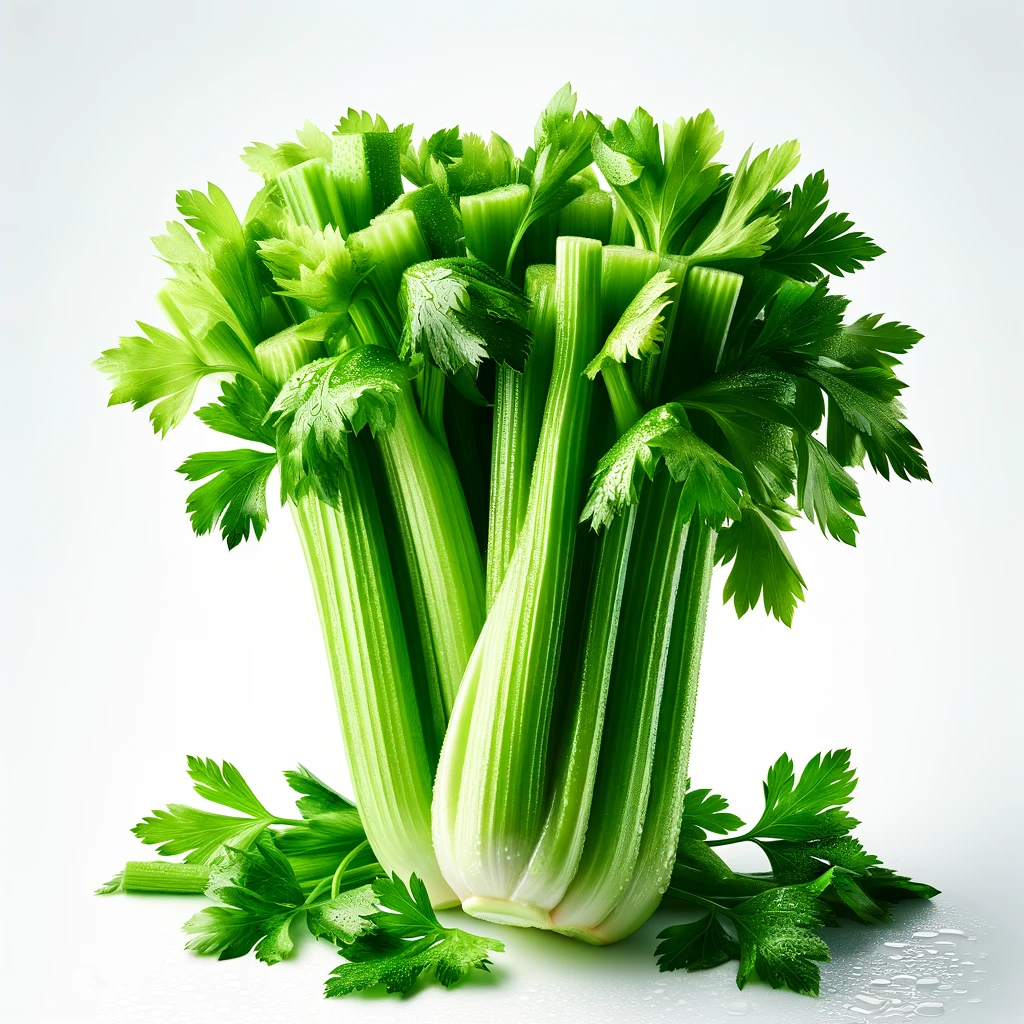Celery

Celery is a crunchy, fibrous vegetable with a distinctive, slightly bitter taste, often used in salads, soups, and as a flavoring base in cooking.
It's a staple in many kitchens, is known for its crisp texture and distinctive, mildly bitter taste.
Celery is part of the "holy trinity" in cooking, along with carrots and onions, providing a flavor base for soups, stews, and sauces. Apart from its culinary uses, celery is celebrated for its low calorie content and high water ratio, making it a popular choice for snacks and detox diets.
It's also rich in vitamins A, K, and C, plus minerals like potassium. Celery can be eaten raw, added to salads for crunch, juiced for a refreshing drink, or cooked to add depth to dishes. Celery is more than just a vegetable; it's a culinary chameleon.
Its crisp texture adds a refreshing bite to salads, while its unique flavor transforms soups and stews. Imagine biting into a fresh, raw stalk, experiencing that burst of crispness followed by a slightly bitter, earthy taste. It's a sensation that awakens the palate.
Celery is not just about taste; it's also about texture. When cooked, it softens, contributing a subtle, aromatic depth to dishes. This vegetable plays a crucial role in a variety of cuisines around the world, from the crunchy base of an American buffalo wing platter to the aromatic backbone of French mirepoix or Italian soffritto.
However, the magic of celery extends beyond its role in traditional cooking. Adventurous chefs and home cooks alike have discovered its versatility. Celery leaves, often overlooked, can be used as a herbaceous addition to salads, soups, and sauces, offering a burst of flavor. The stalks can be stuffed with cream cheese or peanut butter for a quick, nutritious snack.
Moreover, celery juice has gained popularity as a health tonic, believed to have detoxifying and anti-inflammatory properties. This humble vegetable is a powerhouse of nutrition, packed with fiber, vitamins, and antioxidants, supporting overall health and wellness.
Despite its numerous benefits, some may find the taste of celery challenging or simply seek variety. In such cases, substitutes like bok choy, fennel bulb, or jicama can offer similar crunch and freshness in dishes. For cooking purposes, green bell pepper, leeks, or carrots can mimic celery's aromatic contribution to recipes.
This adaptability ensures that celery can fit into any meal plan, accommodating all tastes and dietary needs. Whether you're looking to add a crisp element to your dish or a nutritious boost to your diet, celery is a versatile ingredient that deserves a spot in your kitchen.
Celery is typically found in the fresh produce section of the grocery store, often near other crisp vegetables like carrots and radishes. Look for firm, vibrant green stalks with fresh-looking leaves.
Quick Picks
Chef's Level
Tips and Hacks
When boiling rice, stir a little olive oil or cooking oil into the water. This simple hack prevents the grains from clumping and sticking together, making sure each grain of rice remains separate and fluffy. It's a small step but it makes a big difference.
Tell me more...
Featured Offering
Dill Pickles
Recipe of: Canada

Filed Under: Vegetable
Prep Method: Aging
Base: Cucumber
Made with: 6 Ingredients
Keldons Cookery © 1998 - 2026 All rights Reserved | Secured with SSL
Cook what you eat. Love what you cook!
This is day 17 of 2026